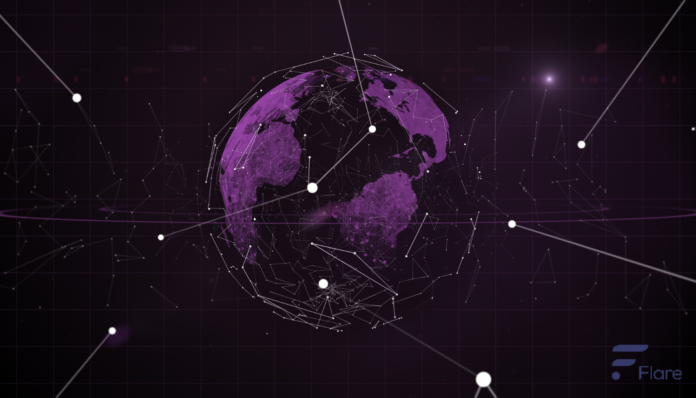There’s a new layer1 blockchain in town and it’s only hours old. Flare Network, which has been under intensive development for some time now, officially went live on July 14 with a genesis event that will run for eight weeks. That’s how long the Flare team believes is necessary to monitor the chain for any issues that might be affecting performance; an audit by Trail of Bits has already given Flare the green light.
With a major developer program starting in August followed by a token generation event (TGE) the month after, it looks like being an action-packed Q3 for Flare, whose backers have waited patiently for this moment. So far, the network is producing blocks and operating as billed. In the days to come, more validators will join the network, further decentralizing it and relieving the Flare Foundation of sole responsibility for its operation.
Flare Achieves Blockchain Genesis
The word “genesis” has been synonymous with crypto ever since Satoshi left a coded message in Bitcoin’s first – or genesis – block. Ever since, new blockchains have made a big deal of their own networks’ own genesis, and Flare is no different. What is different is the duration of Flare’s genesis event: an entire eight weeks. This isn’t the time it takes to produce blocks, it should be noted, but the time required to ensure the network is in optimum condition and ready to start hosting its first dApps.
Decentralized applications (dApps) are the way in which most consumers will interact with a blockchain. They are, to decentralized networks, what Facebook and Twitter are to the iOS and Google Play stores. The better the applications, the greater the likelihood of users getting involved. To stimulate this, Flare is initiating a large-scale developer program in August. Aspiring dev teams are invited to submit their proposals for dApps, with the best concepts to be awarded grants.
As Flare CEO Hugo Phillion enthused:
“I’m excited to welcome projects to the network and see the creative ways builders will harness Flare’s cross-chain composability and Web2 data in their dapps. I encourage anyone about to start a new Web3 project to take a look at Flare’s technology. The chain has been designed to reward positive participation by all actors, from token holders, to data providers and validators, with initial incentive pools deployed to accelerate development.”
TGE to Follow Developer Program
Around the same time that Flare’s developer program is assigning its first grants, the network’s token generation event will be commencing. Provisionally scheduled for September, the event will see 15% of the total token supply issued. Before the remaining tokens can start to be distributed, this will need to be ratified by a governance vote. This will ensure that network participants are in agreement as to the best path forward. At present, Flare is undergoing a rapid transition towards decentralization, with new validators joining the network and reducing Flare Foundation’s stake, from an initial 100% to under 33%.
If Flare can capture the imaginations of developers and end-users alike, its vision of an interoperable blockchain ecosystem stands a very good chance of coming to life.
Disclaimer: This article is provided for informational purposes only. It is not offered or intended to be used as legal, tax, investment, financial, or other advice
Credit: Source link





















 Bitcoin
Bitcoin  Ethereum
Ethereum  XRP
XRP  Tether
Tether  Solana
Solana  USDC
USDC  Dogecoin
Dogecoin  Cardano
Cardano  Lido Staked Ether
Lido Staked Ether  TRON
TRON  Wrapped Bitcoin
Wrapped Bitcoin  Wrapped stETH
Wrapped stETH  Chainlink
Chainlink  Avalanche
Avalanche  Sui
Sui  Stellar
Stellar  Litecoin
Litecoin  Shiba Inu
Shiba Inu  Toncoin
Toncoin  Hedera
Hedera  LEO Token
LEO Token  USDS
USDS  Hyperliquid
Hyperliquid  Polkadot
Polkadot  WETH
WETH  MANTRA
MANTRA  Bitcoin Cash
Bitcoin Cash  Bitget Token
Bitget Token  Ethena USDe
Ethena USDe  Wrapped eETH
Wrapped eETH  Uniswap
Uniswap  Monero
Monero  NEAR Protocol
NEAR Protocol  Pepe
Pepe  WhiteBIT Coin
WhiteBIT Coin  Aave
Aave  Ondo
Ondo  Bittensor
Bittensor  Aptos
Aptos  Internet Computer
Internet Computer  Dai
Dai  Official Trump
Official Trump  Ethereum Classic
Ethereum Classic  Tokenize Xchange
Tokenize Xchange  Mantle
Mantle  OKB
OKB  Gate
Gate  sUSDS
sUSDS  Coinbase Wrapped BTC
Coinbase Wrapped BTC 
